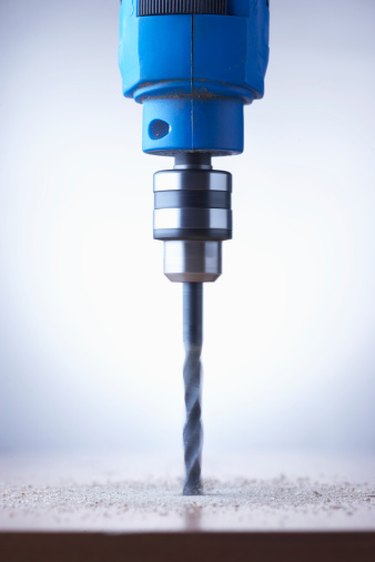Things You'll Need
Carbide-tipped drill bit
Drilling lubricant
Drill

High-carbon steel, or hardened steel as it is sometimes called, uses carbon as the main alloying constituent. High-carbon steel can become harder and stronger through heat treatments and quenching after tempering. This also makes it less ductile, reduces the weld ability and increases the difficulty to drill through it. But with the correct tools and a little time you can drill through high-carbon steel.
Step 1
Select a drill bit set designed for steel. Most drill bits designed for drilling hardened steel are tipped with carbide. These bits are designed to be used with moderate pressure and a low spindle speed.
Video of the Day
Step 2
Select a lubricant to use while drilling. This will cool the cutting edge of the drill bit, lubricate the non-cutting surface, and wash away fine chips of metal created by drilling.
Step 3
Measure the material you are drilling to locate the center of the hole you will be drilling. It is important to find the exact center when you drill your pilot hole because this is the hole that will guide the larger-diameter drill bits.
Step 4
Apply the lubricant to the metal you are drilling, and your drill bit. Start drilling with moderate pressure and low speed, using a small-diameter drill bit. This creates a pilot hole for the larger-diameter drill bit.
Step 5
Select a slightly larger diameter drill bit; lubricate the metal and the bit, then start drilling with moderate pressure.
Step 6
Select the diameter drill bit you will need to make the hole to the desired specifications. Apply drilling lubricant and use moderate pressure and low spindle speed until you have drilled completely through the material.
Video of the Day